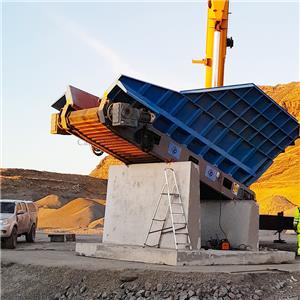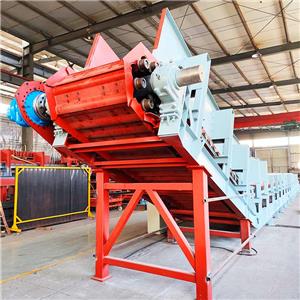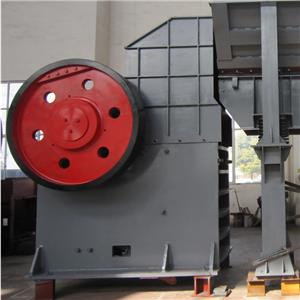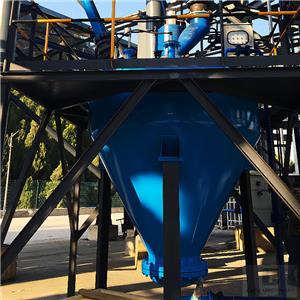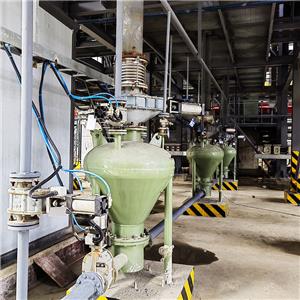- Home
- >
- News
- >
- Industry news
- >
- What is a Loss In Weight Feeder
What is a Loss In Weight Feeder
What is a Loss In Weight Feeder?
In the realm of industrial material handling and processing, precision is paramount. Whether you're in manufacturing, pharmaceuticals, or food processing, understanding what a Loss In Weight Feeder is and how it works can significantly impact your operations' efficiency and accuracy.
Structural Characteristics and Classification
According to application scenarios, loss in weight feeder can be classified into the following types:
Type | Structural Characteristics | Applicable Materials |
Single Hopper LIW Scale | Features a single weighing hopper and feeding mechanism, with a simple structure for single-material metering. | Cement, flour, feed granules |
Multi-Hopper LIW Scale | Comprises multiple independent weighing hoppers in parallel, enabling simultaneous metering of multiple materials and coordinated batching ratios via PLC. | Compound fertilizer formulations, plastic masterbatch mixing |
Loss-in-Weight Feeder | Integrates a hopper with a screw feeder, offering a compact design suitable for precise feeding of small flow rates (e.g., chemical additive dosing). | Pigments, pharmaceutical powders, lithium battery cathode materials |
Defining the Loss In Weight Feeder
A Loss In Weight Feeder is an advanced industrial metering device designed to provide continuous and accurate feeding of bulk materials such as powders, granules, and pellets. Unlike traditional feeders that rely on volume - based measurements, LIW feeders operate on the principle of "weight loss" or "dynamic weighing." The feeder system continuously monitors the decrease in the weight of the material in a hopper over time, calculating the rate of material flow and adjusting the feeding mechanism in real - time to maintain a consistent output. This makes it an ideal solution for applications where precise control of material quantity is crucial.
How Does a Loss In Weight Feeder Work?
The operation of a Loss In Weight Feeder involves a combination of mechanical and electronic components working in harmony.
1. The Hardware Setup
At the core of the LIW feeder is a weigh hopper supported by high - precision load cells or weighbridges. These load cells are highly sensitive sensors that convert the mechanical force exerted by the weight of the material in the hopper into an electrical signal. The hopper is connected to a feeding mechanism, which can be a screw conveyor, vibrating feeder, or belt feeder, depending on the material's characteristics (such as flowability, size, and stickiness).
2. The Weighing and Control Process
• Initialization: When the system starts, the weight of the hopper and the initial amount of material are measured and recorded as the baseline.
• Dynamic Weighing: As the feeding mechanism discharges material from the hopper, the load cells continuously detect the decrease in weight. The system calculates the rate of weight loss over a specific time interval, which directly corresponds to the material flow rate. For example, if the weight of the material in the hopper decreases by 10 kilograms in 5 minutes, the flow rate is calculated as 2 kilograms per minute.
• Closed - Loop Control: The calculated flow rate is then compared to a pre - set target flow rate. If there is a deviation, the feeder's control system adjusts the speed of the feeding mechanism. For instance, if the actual flow rate is lower than the target, the system will increase the speed of the screw conveyor to deliver more material. This closed - loop control ensures that the material output remains as close as possible to the desired value, providing a high level of accuracy.
• Re - filling: When the weight of the material in the hopper reaches a pre - determined low - level threshold, the feeder enters a re - filling phase. During this time, the feeding mechanism may pause or slow down while the hopper is replenished from an upstream source. Once refilled to the high - level threshold, the feeder resumes normal operation, seamlessly continuing the precise feeding process.
Key Advantages of Loss In Weight Feeders
• High Precision: With an accuracy rate often ranging from ±0.3% to ±1%, Loss In Weight Feeders outperform many traditional volume - based feeders, which may have an accuracy of ±2% to ±5%. This makes them indispensable in industries like pharmaceuticals, where even the slightest variation in ingredient quantity can affect product quality and safety.
• Adaptability: They can handle a wide variety of materials, from free - flowing granules to cohesive powders. The ability to adjust the feeding mechanism in real - time based on the material's characteristics ensures consistent performance across different substances.
• Real - Time Monitoring and Control: The continuous weighing and feedback loop of LIW feeders allow for immediate adjustments, reducing the risk of over - or under - feeding. This not only minimizes material waste but also improves the overall efficiency of the production process.
• Data Logging and Integration: Modern Loss In Weight Feeders can be integrated with factory automation systems, providing valuable data on material consumption, flow rates, and operational performance. This data can be used for process optimization, inventory management, and quality control.
Typical Applications of Loss In Weight Feeders
• Chemical Industry: In the production of plastics, paints, and fertilizers, Loss In Weight Feeders are used to accurately meter ingredients such as PVC resins, pigments, and chemical additives. Precise feeding ensures consistent product quality and reduces the risk of costly formulation errors.
• Food and Beverage Industry: From the production of breakfast cereals to the manufacturing of dairy products, LIW feeders are employed to measure ingredients like flour, sugar, and milk powder. The high precision of these feeders is essential for maintaining product taste, texture, and nutritional value.
• Pharmaceutical Industry: In pharmaceutical manufacturing, where strict regulatory requirements govern ingredient quantities, Loss In Weight Feeders play a critical role. They are used to accurately weigh and feed active pharmaceutical ingredients (APIs), excipients, and other components, ensuring the consistency and efficacy of medications.
• New Energy Industry: With the rapid growth of the lithium - ion battery market, Loss In Weight Feeders are used to precisely weigh and mix materials for battery electrodes, such as lithium iron phosphate and ternary materials. Accurate feeding is crucial for producing high - performance batteries with consistent energy density and lifespan.
Choosing the Right Loss In Weight Feeder
When selecting a Loss In Weight Feeder for your application, several factors need to be considered:
• Material Characteristics: Analyze the physical properties of the material, including its flowability, particle size, density, and abrasiveness. This will help determine the appropriate type of feeding mechanism and hopper design.
• Flow Rate Requirements: Clearly define the minimum and maximum flow rates needed for your process. Choose a feeder that can comfortably operate within this range while maintaining the required level of accuracy.
• Environmental Conditions: Consider the operating environment, such as temperature, humidity, and the presence of dust or corrosive substances. Select a feeder with appropriate material construction and protection ratings to ensure reliable operation.
• Integration Capabilities: If you plan to integrate the feeder with existing automation systems, ensure that it has compatible communication interfaces and protocols, such as Modbus, Profibus, or Ethernet.
In conclusion, Loss In Weight Feeders are a vital component in modern industrial processing, offering unparalleled precision, adaptability, and control. By understanding their working principles, advantages, applications, and selection criteria, industries can make informed decisions to enhance their material handling processes, improve product quality, and increase overall productivity. Whether you're a manufacturer looking to optimize your production line or a plant manager aiming to reduce material waste, a Loss In Weight Feeder could be the key to achieving your operational goals.


